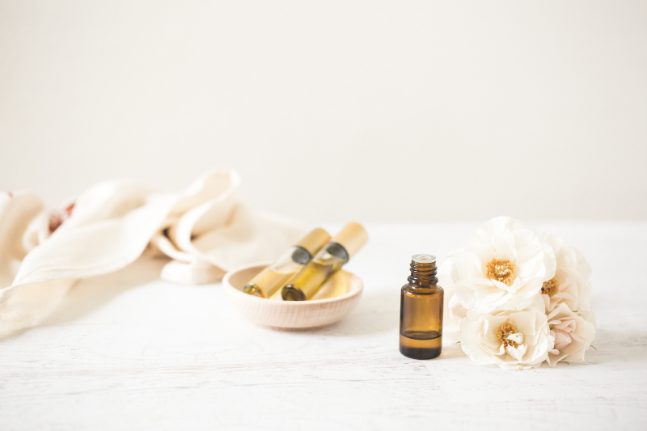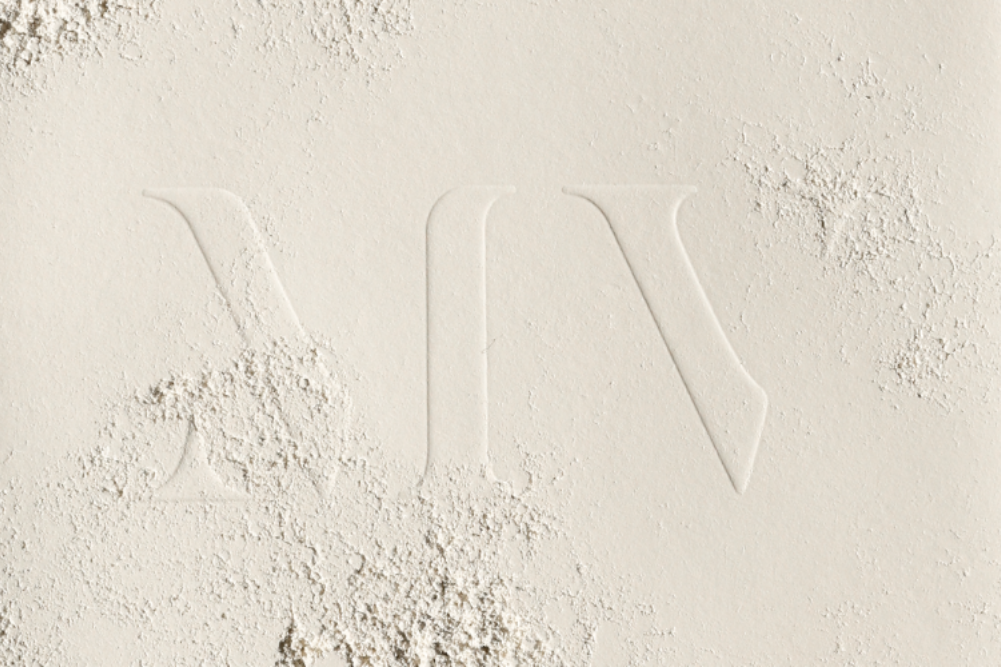Everything you need to know about jojoba, a powerful beauty remedy
When is an oil not an oil? When it’s a natural beauty product called jojoba. It might look and feel like an oil, but it’s actually a nutrient-rich organic wax extracted from the seed of the jojoba plant, and it has a diverse range of beauty uses. With a global shift away from potentially harmful cosmetic additives like parabens, phthalates and propylene glycol, jojoba, along with other organic products like it, is becoming more and more popular.
The name jojoba — pronounced “ho-ho-ba” — is a derivative of the Native American name for the seed, hohowi. It’s also known as coffeeberry, pig nut and deer nut. Native Americans used jojoba for centuries in medicines and skin treatments, and they’d boil the leaves to brew tea. It was claimed that jojoba had magical properties: it could soothe cuts, help to heal wounds and was used to beautify and soften skin.
As a beauty aid, jojoba has many uses. You’ll find it in moisturisers, haircare products, shaving balms, lipsticks, cuticle creams and more. It also has anti-inflammatory and antibacterial properties, making it a great organic all-round beauty product.
… it’s almost universally referred to as an oil when, in fact, it’s a polyunsaturated liquid plant wax.
Jojoba is also an effective carrier for essential oils, so there are countless applications and potential blends. But that’s not all. The meal from the grounded seeds of the plant is a gentle exfoliant. Some also claim it has appetite-suppressant properties.
There are a few perplexing things about jojoba, however. For starters, it’s almost universally referred to as an oil when, in fact, it’s a polyunsaturated liquid plant wax. The plant’s botanical name, Simmondsia chinensis, is a little confusing, too. The latter part of its name suggests it’s Chinese in origin, but it’s actually endemic to New Mexico and Arizona in the US. It’s thought that this was due to a mix-up in plant specimens by German botanist, Johann Link. Conundrums aside, these anomalies only add to the mystique of this golden-coloured liquid wax.
The evergreen woody jojoba shrub grows to around five metres in height and can live up to 100 years. It’s dioecious, which means there are both male and female plants. The female plant is pollinated when wind gusts lift the male flowers into the air and gently blow them onto the flowering female plant. The female flowers form green seed pods and the hard outer casing cracks open, revealing the seeds from which the jojoba is extracted using cold-pressing methods. The chocolate-brown seeds look a lot like roasted coffee beans.
Jojoba is now grown all over the world in regions that have a hot, dry climate as well as loamy and sandy soil profiles. It’s primarily grown for the wax extracted from the seeds, but in India, jojoba was introduced to help combat desertification of the Thar Desert.
Eco-consciousness launches the jojoba industry
About half a century ago, a collective stream of environmental consciousness began to question and challenge the overuse of limited resources. One example was the sperm whale, whose oversized head produces vast quantities of spermaceti wax, which was used in cosmetics. Whaling was a lucrative trade, with other parts of whales used as well. Their oil fuelled lamps, meat was used for human consumption, and corsets were fashioned from whale bones.
“Sebum draws moisture in and it also acts as a raincoat for the skin. Because the wax esters found in jojoba have a very similar molecular construction to sebum, skin is very compatible with jojoba.”
Unfortunately, whale meat is still on the menu in some areas within Japan and Norway, where it’s a much-prized delicacy. But for the most part, all the things whales were hunted for have been replaced by more environmentally friendly products, including plant-based renewable resources. Among these is jojoba in cosmetics, which was introduced into commercial beauty production with a flourish in the 1970s.
In Australia, it was introduced by the CSIRO in 1978 for the beauty industry. Buoyed by generous tax incentives, many farmers decided to grow the plants. However, initial efforts weren’t very productive, as many of the seeds planted were from male plants and only the female plants bear productive seed pods. According to AgriFutures Australia, the industry was re-established in the 1990s, but now there are fewer than a dozen commercial growers.
Powerful properties
So, what is the magic of jojoba? You’ll find jojoba infused in products like sunscreen and some even advocate it as a polish to keep wood from drying out and cracking. In Japan, because jojoba is a natural gum base, it’s an additive to foods.
As a beauty product, though, jojoba truly comes into its own. Around half of the seed is made up of nutrient-rich wax esters that soften, soothe and plump the skin. Dermatologist Dr Katherine Armour, who specialises in cosmeceuticals, says jojoba is a mix of fatty acids (oleic, linoleic, linolenic and arachidonic) and triglycerides. The mix of compounds is not dissimilar to human sebum.
“Sebum draws moisture in, and it also acts as a raincoat for the skin,” says Armour. “Because the wax esters found in jojoba have a very similar molecular construction to sebum, skin is very compatible with jojoba.”
Jojoba is suitable for most skin types except oily skin. It has anti-microbial properties and will help with inflammatory acne, but it won’t completely clear up the skin. Armour advises a number of studies have shown jojoba to be potentially comedogenic, a pore-blocking agent. “If you have very oily skin, I wouldn’t recommend using jojoba,” she says.
It is, however, a rich, luxurious moisturiser for those who have normal, combination or dry skin. “Jojoba works as a moisturiser. It’s a humectant, which means it penetrates the outer layer of the stratum corneum, the top layer of the skin, drawing water into the skin,” says Armour. “It also forms a protective film over the skin, so it effectively traps moisture.”
It also turns out the Native Americans who first started using jojoba were right on the money when they claimed it helped to heal. Armour says the unique properties of jojoba may also accelerate wound closure. “It promotes production of fibroblasts — the cells that make collagen 1, which is one of the main fibres in the skin involved in wound healing and scar tissue,” she says.
A long-lasting product
Unlike some other natural beauty products (like argan oil, which has a shelf life of around three months), jojoba remains fresh and viable for a long time, because it has a high level of oxidative stability. Nader Pazyar from the University of Medical Sciences Iran says one of the reasons for this is that the triglyceride content is less than 3 per cent. As a result, jojoba resists hydrolysis and oxidation.
The unique properties of jojoba may also accelerate wound closure. “It promotes production of fibroblasts — the cells that make collagen 1, which is one of the main fibres in the skin involved in wound healing and scar tissue.”
It can also be heated to extreme temperatures and won’t change. Researchers at the University of Wisconsin and University of Minnesota showed jojoba can reach 300°C and it won’t alter its composition.
Natural jojoba is also free from impurities like gums and chlorophylls. The extracted liquid wax is pure and organic, so it’s biodegradable and non-toxic.
Naturopath Shevawn Becker says jojoba, as well as being one of the most stable and long-lasting beauty oils, is also quite thick and easy to apply. “It’s highly viscous, smooth to apply and absorbs into the skin without leaving a greasy residue,” she says. “It also won’t stain your clothes.”
Mixing it up
Becker says as jojoba can act as an effective carrier oil as it can be easily combined with other essential oils. “Jojoba can be safely mixed with many other oils such as coconut, argan, avocado, almond, evening primrose and olive oil, which provides additional beauty nutrients,” she says.
“This means it is the perfect beauty product to be used for a variety of skin types and needs, dependent on which essential oil it is combined [with],” she adds. “For example, ylang ylang for ageing skin, chamomile for dry skin, bergamot for oily skin and patchouli for breakouts and blemishes.”
Many cosmetic companies infuse jojoba into their beauty products, so when you buy these blended jojoba products always check the ingredient lists to ensure the pure jojoba isn’t mixed with any harmful ingredients.
Alternatively, you can buy pure unadulterated jojoba from around $13 for 100mL. Like other pure oils, it isn’t cheap, but you don’t need to use a great deal for maximum benefit. You can also mix it with other oils to create unique individual blends to suit your needs.
What can I use it for?
- Psoriasis balm. Psoriasis is an autoimmune condition characterised by overproduction of skin cells, leading to flaky skin, scaling and inflammation. It may be helped by applying jojoba, as it nourishes and forms a protective layer over the skin.
- Help with hair loss. If thinning hair is a problem (not hair loss linked to genetics), applying jojoba to the scalp may help. Inside each hair follicle there are sebaceous glands, but debris and excessive sebum can sometimes clog the hair follicle, preventing the hair from growing. Jojoba can help unclog the hair follicles so hair can grow.
- Cold-sore soother. For those who suffer from cold sores, the leaf of the jojoba plant can offer some relief. A study by L. Yarmolinsky and colleagues at the Ben-Gurion University of the Negev showed it can help with cold sores.
- Facial moisturiser. The nutrient-rich formula of jojoba will leave your skin feeling soft and supple. Gently rub in a few drops in the morning and apply a little more for an overnight soothing facial treatment. Jojoba will also help to heal dry, cracked lips.
- Skin ageing. Not only does jojoba soften the skin, Armour says it can also help with fine lines. “It can temporarily improve the appearance of fine lines on the skin, but there is no enduring benefit,” she says. In other words, as with other beauty treatments to help plump the skin, you need to use it regularly for it to continue to work.
- Condition and de-frizz hair. The rich moisturising properties of jojoba will help to nourish dry and damaged hair. A study of African Americans in the Journal of Cosmetic Dermatology showed the addition of jojoba provided greater resistance to hair breakage. A few drops rubbed into the scalp can also help with dandruff and give a luxurious shine to hair. Rub a few drops on your fingers and comb through to help smooth and detangle frizzy locks.
- Take the sting out of burns. If you’ve exposed your skin to burning UV rays, a gentle application of jojoba can help to reduce the redness and soreness. And if you’ve burnt your skin with your hair curler, rub a little jojoba on the burn. Its properties accelerate skin repair and can help prevent flaking and peeling.
- Top-to-toe moisturiser. Use jojoba as a body oil, as an after-shower moisturiser or for dry, peeling and cracked cuticles. You can also use it as a gentle massage “oil” or apply some to your legs before shaving. Cold, dry weather robs the skin of moisture, which is often felt in the extremities (hands and feet). The nourishing properties in jojoba help to heal dry, cracked feet and hands.
Jojoba for natural beauty
Want to try a little jojoba magic for yourself? All you need is a few ingredients to blend, apply and enjoy the benefits of jojoba.
- Jojoba and lemon hair mask. Combine 5–6 drops of lemon essential oil and 2 tbsp of jojoba. Massage into the scalp and through the hair. Leave on for 1–2 hours, then shampoo and condition as normal.
- Jojoba, frankincense and myrrh cuticle oil. Combine 2 tbsp of jojoba, 1 tbsp of almond oil, 2 drops of frankincense and 2 drops of myrrh. Apply 1–2 drops to the nail cuticle area and massage up to the top of the nail.
- Jojoba and rose moisturising mist. Combine ½ cup of rosewater and 3 tbsp of jojoba. Place in a spray bottle and spritz throughout the day when your skin needs a pick-me-up.
Recipes courtesy of naturopath Shevawn Becker.








